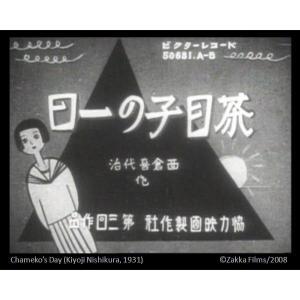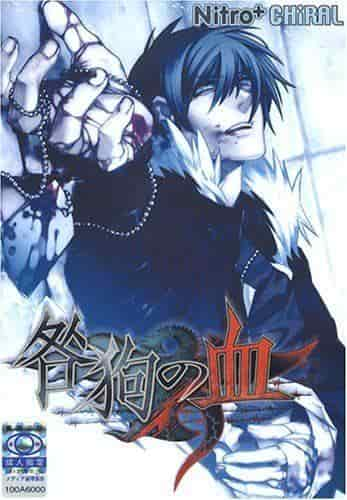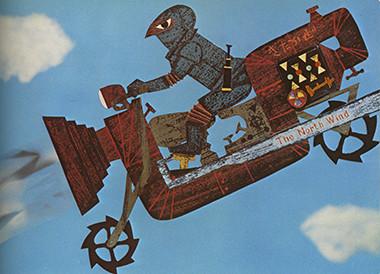A Day in Chameko's Life: A look into the unique characters and charm of the story

A day in the life of Chameko■ Public Mediatheater ■ Original MediaAnime Original ■ Release date1931 ■ Number of EpisodesEpisode 1 ■ ProductionCooperating Film Company: Kiyoji Nishikura ■ Storydetail The story is told in an operetta style, depicting Chameko's day in the life, from waking up in the morning, brushing her teeth, eating, going to school and being praised by her teacher for her math and Japanese skills, to going to the movies with her family in the evening. ■ExplanationdetailIt is synchronized with Victor Records 50681A and B sides. The third film by the Collaborative Film Company. ■ Main staffdetailLyrics and composition: Kouka Sasa Vocals: Ruby Takai ■ ReviewReleased in 1931, Chameko's Day is an animated film produced by Kyoryoku Eigasha, and is one of the works that symbolize the Japanese animation culture of that era. This work is an operetta-style depiction of a day in the life of a young girl named Chameko, and realistically recreates the daily lives of children at the time. Below, we will take a closer look at the appeal and background of this work, as well as its modern-day reputation. Background of the workIn the 1930s in Japan, during the early Showa period, animation films were gradually becoming more popular. Kyokuhin Eigasha was known as a pioneer in this field, and Chameko's Day was their third production. Although animation at this time was still technically immature in some areas, it had a major impact on the development of later animation films, such as in storytelling and synchronization with music. The appeal of the storyThe story of "Chameko's Day" depicts Chameko's daily life, from waking up in the morning to going to the movies at night. Despite the simple storyline, it realistically depicts the world from a child's perspective, including Chameko's success at school and time with her family. In particular, the scenes in which she is praised by her teacher for her math and Japanese skills were episodes that children of the time could easily relate to, and also contain educational elements. Furthermore, the images, synchronized with the operetta-style music, could be enjoyed both visually and aurally, and left a strong impression on children. Fusion of music and videoOne of the main features of this work is the fusion of music and images synchronized on the A and B sides of Victor Records 50681. The lyrics and music were written by Sasa Kouka and Takai Ruby, who sang the song, giving a richer portrayal of Chameko's daily life. The operetta-style music reflected the trends of the time, providing a familiar atmosphere for viewers. The timing of the images and music is also perfectly matched, making the work enjoyable both visually and aurally. Technical evaluationConsidering the technical standards of 1931, Chameko's Day is a work that should be highly praised. Animation technology at the time was still in its infancy, and hand-drawn animation was the norm. However, this work pursues visual beauty, with extremely detailed depictions of character movements and backgrounds. Additionally, the synchronization with the music was technically difficult, but was a brilliant success. In these respects, it can be said to be a work that surpassed the technical standards of its time. Modern RecognitionEven today, Chameko's Day is considered an important work in the history of Japanese animation. It is especially highly regarded for its depiction of Japanese society and children's lives in the early Showa period, and is valuable as a historical document. In addition, the fusion of music and images is said to have had a major influence on the development of later animated films. For modern animation enthusiasts and researchers, this work is definitely worth seeing. ■RecommendationI highly recommend "Chameko's Day" to anyone who wants to know the charm of Japanese animation in the early Showa period, and to anyone interested in the fusion of music and video. It can also be enjoyed by the whole family as a work depicting the daily lives of children. I also recommend using this work as an opportunity to learn about other works by Kyoryoku Eigasha and the history of Japanese animation at that time. Please watch this historic work and feel its charm. Related information Other works by the cooperating film company: "Momotaro's Sea Eagle" and "Urashima Taro" References・History of Japanese animation films (p. 206) |
<<: Toy Trains: A thorough evaluation of the appeal and educational value of children's cartoons
>>: "Song of Spring" review: A fusion of moving story and beautiful music
Recommend
"Drug War 2" starring Andy Lau and Louis Koo announced to be rescheduled to July 19
"Drug War 2: King of Drug Lords", direc...
A thorough review of Lupin the Third's "Operation Return of the Treasure!!"! What is the appeal that you can't miss?
The full story and appeal of Lupin the Third: Tre...
The latest episode of the new anime "Eighth Man? Stop it!" shows that the second generation of nobles also have to work hard
The new anime "Eighth Man? Stop It!" ba...
The top ten nominees for the 28th Tezuka Osamu Cultural Award are announced, with My Son leading the way
The organizing committee of the 28th Osamu Tezuka...
The first batch of photos of "Fast and Furious 9" show a bald man eating a banana
"Fast & Furious 9" officially start...
The movie "Slam Dunk" released a 4-page final trailer and will be released nationwide on the 20th
The movie "Slam Dunk" released the fina...
Pierce Brosnan in talks to play Alfred in Batman solo film
The Batman standalone film is being prepared inte...
The new animated film "Doraemon: Nobita's Little Space War 2021" was released and will be released on March 5, 2021
The annual routine work, the new animated film &q...
The appeal and reviews of "Manga Hajimete Monogatari": A work recommended for beginners
"Manga Hajimete Monogatari": Looking ba...
New PV of "The Last Battle Between You and Me": The boy and the girl love and hate each other!
According to new news, the first PV video of the ...
Forest Elves Review: Welcome to a fascinating fantasy world
The charm and evaluation of "Forest Fairy - ...
The 94th Academy Award for Best Visual Effects Film Nominees: Shang-Chi, The Matrix 4, etc.
Today, the Academy of Motion Picture Arts and Sci...
"Ninja Hattori-kun + Perman" review: What is the appeal of Jippou vs. Miracle Egg?
The appeal and evaluation of "Ninja Hattori-...
James Wan's "The Nun 2" has started filming in France, with the female lead replaced
"The Nun 2", produced by James Wan, has...
Netflix animation "Castlevania" released the fourth season trailer and will be broadcast on May 13
Netflix released the trailer for the fourth seaso...









